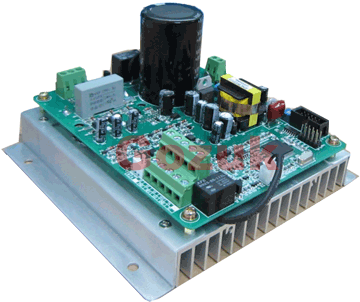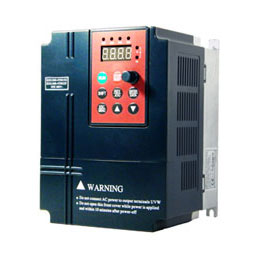Is VFD always the best solution?
Choose any centrifugal pump with a full speed duty point flow significantly to the left of the Best Efficiency Point flow. Then, operate that pump in a system with a comparatively high set point pressure (e.g. a single stage centrifugal with a 20m full speed duty point and an 18m static head or minimum set pressure - you could also use 60m/55m and get a similar effect). Then, check the specific energy for that duty point (i.e. the kWhr/kL which, for a fixed total volume pumped, is a firm indication of how much power you will use). Then, simulate the low speed duty and identify the specific energy for that duty point and you will more than likely see a significantly increased kWhr/kL compared to the full speed duty point.
Note that the actual kW value drawn by the motor will probably be lower with the reduced speed. What the increased kWhr/kL value tells you is that the pump will have to run much longer to pump the same volume and this will end up costing your more in energy consumption (i.e. power bill) for the volume that you have to pump. e.g. if your pump uses half the power but runs for 3 times as long to deliver the same volume then you have used 50% more energy and not saved 50%.
I am confident in saying this as I have over 20 years experience in this area. I've been responsible for making contractual performance guarantees on behalf of Gozuk Co Ltd (China) for nearly all of their largest projects for over 10 years. In some cases, the guarantees have included performance at reduced speed duty points at the VFD supply terminals. Furthermore, I've presented on this topic to water authorities, councils, consultants and large mining clients. Whilst there may not be a high static head in a water supply system, there is typically a minimum pressure setpoint which, if the pump is operated at relatively low speeds at those pressures, will induce a similar effect on pump performance.
Note that the actual kW value drawn by the motor will probably be lower with the reduced speed. What the increased kWhr/kL value tells you is that the pump will have to run much longer to pump the same volume and this will end up costing your more in energy consumption (i.e. power bill) for the volume that you have to pump. e.g. if your pump uses half the power but runs for 3 times as long to deliver the same volume then you have used 50% more energy and not saved 50%.
I am confident in saying this as I have over 20 years experience in this area. I've been responsible for making contractual performance guarantees on behalf of Gozuk Co Ltd (China) for nearly all of their largest projects for over 10 years. In some cases, the guarantees have included performance at reduced speed duty points at the VFD supply terminals. Furthermore, I've presented on this topic to water authorities, councils, consultants and large mining clients. Whilst there may not be a high static head in a water supply system, there is typically a minimum pressure setpoint which, if the pump is operated at relatively low speeds at those pressures, will induce a similar effect on pump performance.
I have seen many applications where variable frequency drive (VFD) do a great job but I have also seen plenty where they do not.. If the pump speed drops by 50% the head generated is only a quarter (square rule) - so VFD will not save energy if the application is all static lift. Note also poor electrical supply quality is difficult for VFD to deal with. They can have great benefits in reducing water hammer.
so does this mean that in countries without such a reliable electricity supply (like some of Asia for example - Philippines, Thailand, Malaysia, India etc), VFDs would not be such a good idea and are probably not used so much? It also suggests that it would also make more sense to pump to a service reservoir rather than directly into the distribution network, as this would mean the water supply was safe in the event of a power cut.
So I suppose they are most useful in countries with developed infrastructure - UK, USA, Canada, W. Europe, Australia, Japan etc.
So I suppose they are most useful in countries with developed infrastructure - UK, USA, Canada, W. Europe, Australia, Japan etc.
In India VFD assisted pumps are used by mostly up-market(big hotels, hospitals, IT parks etc) and yes we do have frequent power problems but these customers also have their own back up power supply. ABB pumps have very good market for these pumps in India. The application is prominent in water supply and HVAC.
Post a Comment:
You may also like:
Featured Articles
Non-Enclosure Variable Frequency Drive ...
 No enclosure (cover), reducing installation space and cost effective. Widely used in All-In-One control cabinet. Keep the same ...
No enclosure (cover), reducing installation space and cost effective. Widely used in All-In-One control cabinet. Keep the same ...
 No enclosure (cover), reducing installation space and cost effective. Widely used in All-In-One control cabinet. Keep the same ...
No enclosure (cover), reducing installation space and cost effective. Widely used in All-In-One control cabinet. Keep the same ...Variable frequency drive application ...
 Variable Frequency Drive (VFD) can be used in lots of fields. Variable frequency drives are widely used to control the speed of ...
Variable Frequency Drive (VFD) can be used in lots of fields. Variable frequency drives are widely used to control the speed of ...
 Variable Frequency Drive (VFD) can be used in lots of fields. Variable frequency drives are widely used to control the speed of ...
Variable Frequency Drive (VFD) can be used in lots of fields. Variable frequency drives are widely used to control the speed of ...Variable frequency drive in HVAC ...
 Variable frequency drives (VFD) have been used for HVAC systems in buildings for more than 40 years. But only in recent years, ...
Variable frequency drives (VFD) have been used for HVAC systems in buildings for more than 40 years. But only in recent years, ...
 Variable frequency drives (VFD) have been used for HVAC systems in buildings for more than 40 years. But only in recent years, ...
Variable frequency drives (VFD) have been used for HVAC systems in buildings for more than 40 years. But only in recent years, ...Variable Frequency Drive Harmonics and ...
A discussion of the benefits of variable frequency drives often leads to a question regarding electrical harmonic distortion ...
Three phase inverters
 In the variable frequency drive rectifier paper, it explains how to go from three phase alternating current voltage to a direct ...
In the variable frequency drive rectifier paper, it explains how to go from three phase alternating current voltage to a direct ...
 In the variable frequency drive rectifier paper, it explains how to go from three phase alternating current voltage to a direct ...
In the variable frequency drive rectifier paper, it explains how to go from three phase alternating current voltage to a direct ...
VFD manufacturers
